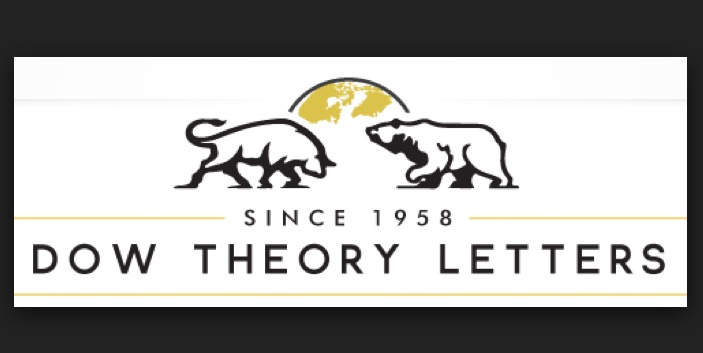
The global platinum market is currently experiencing significant turbulence, driven by opportunistic trading strategies that exploit import loopholes in key consuming nations, India and China. As of November 5, 2025, these market anomalies are leading to substantial gains for some traders while distorting pricing, impacting government revenues, and reshaping market dynamics in the precious metals sector. The developments highlight the ongoing challenges regulators face in keeping pace with sophisticated financial maneuvers and underscore the inherent volatility in commodity markets.
In India, an "oversight" in import regulations has created a lucrative avenue for traders to bypass duties on platinum bullion. Simultaneously, China's recent imposition of a 13% Value-Added Tax (VAT) on platinum imports, effective November 1, 2025, triggered a massive "front-loading" spree by traders aiming to circumvent the new levy. These events, occurring amidst an already upward trending global platinum price, are generating a trading frenzy and raising questions about market fairness, regulatory effectiveness, and the future stability of precious metal supply chains.
Unpacking the Platinum Loophole Phenomenon
The current market agitation in platinum is a tale of two distinct, yet equally impactful, import strategies unfolding in the world's largest precious metals consumers.
In India, the core of the exploitation lies in a regulatory disparity: while silver jewelry has been moved to a "restricted" import category to prevent its conversion into duty-free bullion, platinum jewelry inexplicably remains in the "free" import category. Traders, primarily under the Asean-India free-trade agreement, are importing vast quantities of platinum jewelry from countries like Indonesia at nil duty. The scale of this operation is staggering, with daily imports surging to 300-500 kg, a volume that previously constituted an entire year's inbound shipments. These consignments, valued at over ₹200 crore daily (approximately $24 million USD), are reportedly being melted down into platinum bars and coins to cater to India's robust investment demand, effectively sidestepping the 6.4% import duty applicable to direct platinum bullion. This maneuver allows traders to pocket a healthy 4-4.5% profit after accounting for melting costs, all while depriving the Indian government of an estimated ₹14 crore (approximately $1.7 million USD) in daily revenue. While technically not illegal, this practice is widely viewed as a significant regulatory "oversight" that distorts the domestic market. This situation follows a prior loophole, largely addressed by early 2025, where traders imported gold disguised as platinum alloy to evade higher gold duties.
Meanwhile, in China, the market is grappling with the aftermath of a major policy shift. Effective November 1, 2025, China ended a two-decade-old tax exemption on platinum imports, imposing a flat 13% VAT. Previously, the state-controlled China Platinum Company held an exclusive privilege for tax-free imports, creating an uneven playing field. The anticipation of this VAT imposition led to a dramatic "front-loading" of platinum shipments into China. Traders rushed to import as much platinum as possible before the November 1st deadline to avoid the new tax, resulting in a significant spike in demand and market volatility. This pre-VAT frenzy saw Shanghai platinum premiums soar to record highs, with the Shanghai Gold Exchange (SGE) platinum price premium to international prices hitting an unprecedented 14%, a stark contrast to its historical average of around 3%. This immediate reaction underscores the sensitivity of the market to tax changes and the lengths to which traders will go to optimize their positions.
Corporate Players Navigating the Platinum Rush
The current volatility in the platinum market, driven by these import loopholes and policy changes, creates a complex landscape of winners and losers among public companies and market participants.
In India, jewelers and traders involved in the import and melting of platinum jewelry are the immediate beneficiaries. Companies that have established supply chains with Indonesian partners under the Asean-India free-trade agreement, and possess the infrastructure to quickly melt down jewelry into investment-grade bullion, are realizing significant profit margins (4-4.5%) by bypassing the 6.4% import duty. While specific public companies are not explicitly named as being involved, large bullion dealers and jewelry manufacturers (e.g., Titan Company Limited (NSE: TITAN), Rajesh Exports Ltd (NSE: RAJESHEXPO)) with the capacity to adapt their sourcing strategies could potentially leverage this loophole, though ethical and regulatory scrutiny remains a significant factor. Conversely, legitimate platinum importers and refiners (e.g., MMTC-PAMP India Private Limited, a joint venture between India's MMTC and Switzerland's MKS PAMP Group, though not publicly traded) who adhere strictly to bullion import duties are at a competitive disadvantage, facing higher costs and potentially reduced market share for their direct bullion offerings. The Indian government is a clear loser, facing an estimated daily revenue loss of ₹14 crore.
In China, the situation presents a mixed bag. Prior to November 1, 2025, international platinum producers and exporters (e.g., Anglo American Platinum (JSE: AMS), Impala Platinum Holdings Ltd (JSE: IMP), Sibanye-Stillwater (NYSE: SBSW)) benefited from the "front-loading" phenomenon, experiencing a surge in demand from Chinese buyers eager to beat the VAT deadline. This likely translated into higher sales volumes and potentially stronger spot prices in the immediate run-up to the policy change. However, post-November 1st, the imposition of the 13% VAT means higher effective import costs for all platinum entering China. This could dampen short-term demand in China's price-sensitive market, potentially impacting future sales volumes for these global producers. For domestic Chinese entities, the removal of the exclusive tax exemption for the state-controlled China Platinum Company is a leveling of the playing field. Other Chinese industrial users and refiners of platinum (e.g., those involved in automotive catalysts, chemical production) will now face the same 13% VAT, which could slightly increase their input costs, potentially impacting their profitability unless they can pass these costs onto consumers. In the long term, the reform is expected to foster increased market participation and improved liquidity, which could benefit a broader range of market players by creating a more transparent and competitive environment.
Broader Implications for the Precious Metals Sector
The platinum market's current turmoil, driven by import loopholes and tax reforms, resonates far beyond the immediate gains and losses, signaling wider implications for the entire precious metals sector and commodity markets at large.
Firstly, these events highlight the constant cat-and-mouse game between market participants seeking arbitrage opportunities and regulators striving for market fairness and revenue protection. The Indian platinum jewelry loophole, an "oversight" that allows for duty-free bullion conversion, underscores the need for agile and comprehensive regulatory frameworks that can anticipate and close such gaps swiftly. This scenario could prompt other nations to review their own import classifications for precious metals and their alloys, potentially leading to a wave of similar regulatory adjustments. For the broader precious metals market, including gold and silver, this serves as a cautionary tale: existing trade agreements and tariff structures might contain similar vulnerabilities that could be exploited, leading to market distortions and unintended consequences.
Secondly, China's VAT reform, while initially causing volatility, represents a significant step towards market liberalization and transparency. By removing the exclusive tax advantage of a state-owned entity, China is signaling a move towards a more competitive and open market for platinum. This trend, if extended to other commodities, could reshape global trade flows and pricing mechanisms. The immediate spike in Shanghai platinum premiums before the VAT implementation demonstrates the power of anticipated policy changes to drive short-term market behavior, a phenomenon that could be replicated in other commodity markets facing similar regulatory shifts. This also emphasizes the growing influence of Asian markets, particularly China and India, not just as consumers but as drivers of global precious metal demand and price discovery.
Historically, market anomalies and arbitrage opportunities have been a recurring feature of commodity markets. For instance, differing tax regimes and trade agreements have often led to cross-border movements of goods to exploit price differentials, albeit rarely on the scale seen with the current Indian platinum loophole. The regulatory response, typically involving stricter classification, higher duties, or outright restrictions, often follows the exploitation, rather than preempting it. The current situation with platinum draws parallels to past instances of gold smuggling or duty evasion, where creative methods were devised to bypass government levies, ultimately leading to revised customs policies. The long-term impact of such events often includes a more robust, albeit sometimes more complex, regulatory environment designed to prevent future abuses, alongside a potential shift in established trade routes and sourcing strategies for market participants.
The Road Ahead: Navigating Platinum's Future
The current state of the platinum market suggests a dynamic and evolving landscape in the short-to-medium term, with several key possibilities and challenges emerging for investors and industry players.
In the short term, particularly in India, the pressure on the government to address the platinum jewelry import loophole is immense. The India Bullion and Jewellers Association (IBJA) is actively advocating for platinum jewelry to be moved to the "restricted" import category, similar to silver jewelry. If this regulatory change occurs, it would immediately eliminate the arbitrage opportunity, likely causing a sharp decline in duty-free platinum imports and potentially leading to a temporary price correction in the domestic Indian market for those who benefited from the loophole. For global platinum producers, this could mean a reduction in the unexpected surge of Indian demand driven by the loophole, shifting focus back to fundamental supply-demand dynamics. In China, post-VAT, the market is expected to stabilize, but the higher effective import costs due to the 13% VAT may dampen short-term demand, particularly from price-sensitive industrial sectors, and could lead to a slight increase in SGE platinum quotes.
Longer term, the implications are more strategic. The increased transparency and level playing field in China, while potentially leading to higher import costs, could foster greater market participation and liquidity, ultimately benefiting the sector by creating a more efficient price discovery mechanism. This might encourage more direct investment in platinum and a broader range of participants in the Chinese market. For global platinum miners (e.g., Anglo American Platinum (JSE: AMS), Impala Platinum Holdings Ltd (JSE: IMP)), the removal of such loopholes and the establishment of clearer tax regimes across major consuming nations could lead to more predictable demand patterns, allowing for better production planning and pricing strategies. However, they will need to factor in the higher effective costs for Chinese buyers. The overall global platinum market continues to benefit from strong fundamentals, including tight supply from South Africa, a moderate rebound in industrial demand (especially in automotive catalysts), and its role as a safe-haven asset amidst geopolitical uncertainty. The World Bank's projection of a 29% rise in platinum prices in 2025, with further gains in 2026 and 2027, suggests underlying strength that could absorb some of the short-term market adjustments. Strategic pivots for companies might include diversifying their market access strategies, lobbying for fairer trade practices, and investing in advanced refining technologies to meet evolving market demands.
Concluding Thoughts: A Market in Flux
The recent events in the platinum market, marked by the exploitation of import loopholes in India and significant tax reforms in China, underscore the dynamic and often unpredictable nature of global commodity trading. The immediate takeaway is the agility of market participants to identify and capitalize on regulatory disparities, leading to substantial, albeit often temporary, gains. While these maneuvers create short-term market distortions and revenue losses for governments, they also serve as catalysts for regulatory review and reform, pushing markets towards greater transparency and fairness in the long run.
Moving forward, the platinum market is poised for continued evolution. Investors should closely monitor regulatory developments in India regarding platinum jewelry imports, as any changes could swiftly alter market dynamics. In China, while the initial VAT-driven volatility has subsided, the long-term impact on demand elasticity and market structure will be crucial to observe. The underlying bullish fundamentals for platinum, driven by supply constraints and industrial demand, suggest that despite these short-term market anomalies, the precious metal retains significant investment appeal. However, the current events highlight the importance of understanding not just macro-economic factors but also granular trade policies and their potential for exploitation.
In the coming months, investors should watch for any official announcements from the Indian government regarding platinum import classifications, the sustained impact of China's VAT on platinum demand and premiums, and how major platinum producers adjust their strategies in response to these evolving market conditions. The platinum market serves as a potent reminder that in the world of finance, vigilance and adaptability are paramount.
This content is intended for informational purposes only and is not financial advice






